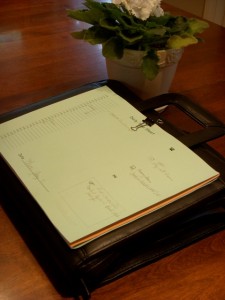(Tip #2 of the series 15 Tips to Support Your Brain for Good Time Management)
The problem with time is that you can’t see it. It is invisible, and this invisible quality is what stumps people with the executive functioning challenge of time management. Their brain lacks an internal clock that notices the passage of time. They tend to be visually distracted by what is in front of them. This is especially true of those with ADHD.
 To solve the mismatch between the time-challenged brain and invisible time, recall the old adage: “Out of sight, out of mind.” To remember to get things done, you have to keep your plan for the day in sight.
To solve the mismatch between the time-challenged brain and invisible time, recall the old adage: “Out of sight, out of mind.” To remember to get things done, you have to keep your plan for the day in sight.
If you plan your day using a computer program like Outlook, have a second monitor on your desk dedicated just to Outlook. If that isn’t possible, print off your day’s schedule and put it on a clipboard kept in sight.
I clip my day plan to the outside of my planner that is always close at hand. I designed a form that has space to remind me about phone calls, emails and errands that I need to do. I added a box to help with my working memory challenges. Anything I need to remember that pops up during the day is written in that box. That way I don’t forget it.
I start each day with my day plan filled in. It takes less than five minutes. Without it, I am anxious and unproductive. With it I am grounded in time; in control.
Try using a day plan. Keep it in sight. Notice what a difference it can make!

